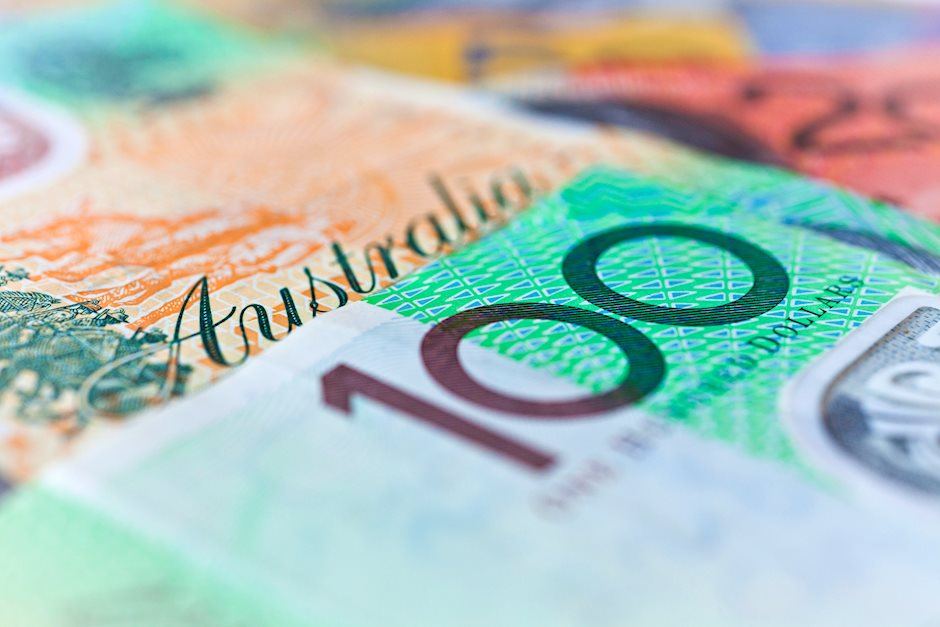AUD/USD clings to gains near 0.6370 amid a softer USD not out of the woods yet
- AUD/USD attracts some buyers on Monday amid a modest USD downtick.
- The RBA’s dovish tilt and China’s economic woes cap gains for the Aussie.
- Traders seem reluctant to place directional bets ahead of the Fed decision.

The AUD/USD pair sticks to its mildly positive bias through the first half of the European session on Monday, albeit it lacks any follow-through buying. Spot prices remain close to over a one-year low touched last Friday and currently trade around the 0.6365-0.6370 region, up just over 0.15% for the day.
The US Dollar (USD) kicks off the new week on a weaker note amid a modest pullback in the US Treasury bond yields and turns out to be a key factor lending some support to the AUD/USD pair. That said, the Reserve Bank of Australia's (RBA) dovish tilt, along with China's economic woes, act as a headwind for the Australian Dollar (AUD). Apart from this, expectations for a less dovish Federal Reserve (Fed) favor the USD bulls and suggest that the path of least resistance for spot prices remains to the downside.
Investors now seem convinced that the US central bank will slow the pace of its rate-cutting cycle amid signs that the progress in lowering inflation toward the 2% target has stalled. This, in turn, has been a key factor behind the recent rise in the benchmark 10-year US Treasury yield to a three-week high and validates the positive outlook for the buck. Apart from this, geopolitical risk and US-China trade war fears should benefit the safe-haven buck, warranting some caution before placing bullish bets around the AUD/USD pair.
Traders might also refrain from placing aggressive bets and opt to wait for the outcome of the highly-anticipated FOMC policy meeting on Wednesday. The Fed is widely expected to lower borrowing costs by 25 basis points (bps), though it could adopt a more cautious stance on cutting rates. Hence, the focus will be on the accompanying policy statement, which, along with Fed Chair Jerome Powell's comments at the post-meeting press conference, will drive the USD demand and provide a fresh impetus to the AUD/USD pair.
Australian Dollar FAQs
One of the most significant factors for the Australian Dollar (AUD) is the level of interest rates set by the Reserve Bank of Australia (RBA). Because Australia is a resource-rich country another key driver is the price of its biggest export, Iron Ore. The health of the Chinese economy, its largest trading partner, is a factor, as well as inflation in Australia, its growth rate and Trade Balance. Market sentiment – whether investors are taking on more risky assets (risk-on) or seeking safe-havens (risk-off) – is also a factor, with risk-on positive for AUD.
The Reserve Bank of Australia (RBA) influences the Australian Dollar (AUD) by setting the level of interest rates that Australian banks can lend to each other. This influences the level of interest rates in the economy as a whole. The main goal of the RBA is to maintain a stable inflation rate of 2-3% by adjusting interest rates up or down. Relatively high interest rates compared to other major central banks support the AUD, and the opposite for relatively low. The RBA can also use quantitative easing and tightening to influence credit conditions, with the former AUD-negative and the latter AUD-positive.
China is Australia’s largest trading partner so the health of the Chinese economy is a major influence on the value of the Australian Dollar (AUD). When the Chinese economy is doing well it purchases more raw materials, goods and services from Australia, lifting demand for the AUD, and pushing up its value. The opposite is the case when the Chinese economy is not growing as fast as expected. Positive or negative surprises in Chinese growth data, therefore, often have a direct impact on the Australian Dollar and its pairs.
Iron Ore is Australia’s largest export, accounting for $118 billion a year according to data from 2021, with China as its primary destination. The price of Iron Ore, therefore, can be a driver of the Australian Dollar. Generally, if the price of Iron Ore rises, AUD also goes up, as aggregate demand for the currency increases. The opposite is the case if the price of Iron Ore falls. Higher Iron Ore prices also tend to result in a greater likelihood of a positive Trade Balance for Australia, which is also positive of the AUD.
The Trade Balance, which is the difference between what a country earns from its exports versus what it pays for its imports, is another factor that can influence the value of the Australian Dollar. If Australia produces highly sought after exports, then its currency will gain in value purely from the surplus demand created from foreign buyers seeking to purchase its exports versus what it spends to purchase imports. Therefore, a positive net Trade Balance strengthens the AUD, with the opposite effect if the Trade Balance is negative.
Author

Haresh Menghani
FXStreet
Haresh Menghani is a detail-oriented professional with 10+ years of extensive experience in analysing the global financial markets.

















